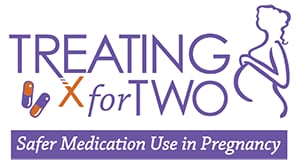Key Findings: A Growing Number of Reproductive-Aged Women are Filling Prescriptions for ADHD Medicine

Attention-deficit/hyperactivity disorder (ADHD) affects people of all ages, including adult women. A study from the Centers for Disease Control and Prevention (CDC) found the percentage of privately-insured U.S. women aged 15-44 who filled a prescription for a medicine to treat ADHD increased nearly 350% between 2003 and 2015. Options for managing ADHD symptoms during pregnancy should be discussed with a healthcare provider as women consider getting pregnant.
Main Findings
- ADHD medicine prescriptions to reproductive-aged women with private insurance increased for all included age groups from 2003 to 2015.
Age (Years) Increase in ADHD Medicine Prescriptions 15 – 19 170% 20 – 24 450% 25 – 29 700% 30 – 34 560% 35 – 39 400% 40 – 44 383%
- The increase in ADHD medicine prescriptions from 2003 to 2015 was because of an increase in stimulant medicines, not the non-stimulant medicine atomoxetine (Strattera©).
- Some women may take ADHD medicine before they know they are pregnant, or may continue taking their ADHD medicine during pregnancy because it helps with their ADHD symptoms. Currently, there is very little information available about the safety of taking ADHD medicines during pregnancy.
- Women should discuss options for managing ADHD symptoms during pregnancy with their healthcare providers if or when they start planning for a pregnancy.
About This Study
- CDC researchers used the Truven Health MarketScan® Commercial Database. These data are health insurance claims from a large sample of individuals with mainly employer-sponsored private insurance.
- In this study, researchers looked at private insurance claims for 2.3–6.8 million women per year aged 15–44 years with prescription drug coverage to see how many women filled ADHD medicine prescriptions from outpatient pharmacies.
- In this study, researchers looked for changes in how many reproductive-aged women filled ADHD medicine prescriptions each year from 2003 to 2015.
Our Work

CDC’s National Center on Birth Defects and Developmental Disabilities (NCBDDD) is working to improve the health of women and babies through its Treating for Two: Safer Medication Use in Pregnancy initiative. Treating for Two works to understand trends in medicine use among pregnant women and women of reproductive age, and provide women and healthcare providers with information about the safety or risk of using specific medicines during pregnancy. This information will allow women and their doctors to make informed decisions about treating health conditions during pregnancy.
For more information, visit www.cdc.gov/treatingfortwo.
More Information
Key Findings Reference
Anderson KN, Ailes EC, Danielson M, Lind JN, Farr SL, Broussard CS, Tinker SC. Attention-Deficit/Hyperactivity Disorder Medication Prescription Claims Among Privately Insured Women Aged 15–44 Years — United States, 2003–2015. MMWR Morb Mortal Wkly Rep 2018; 67: 66–70.






















.png)











No hay comentarios:
Publicar un comentario